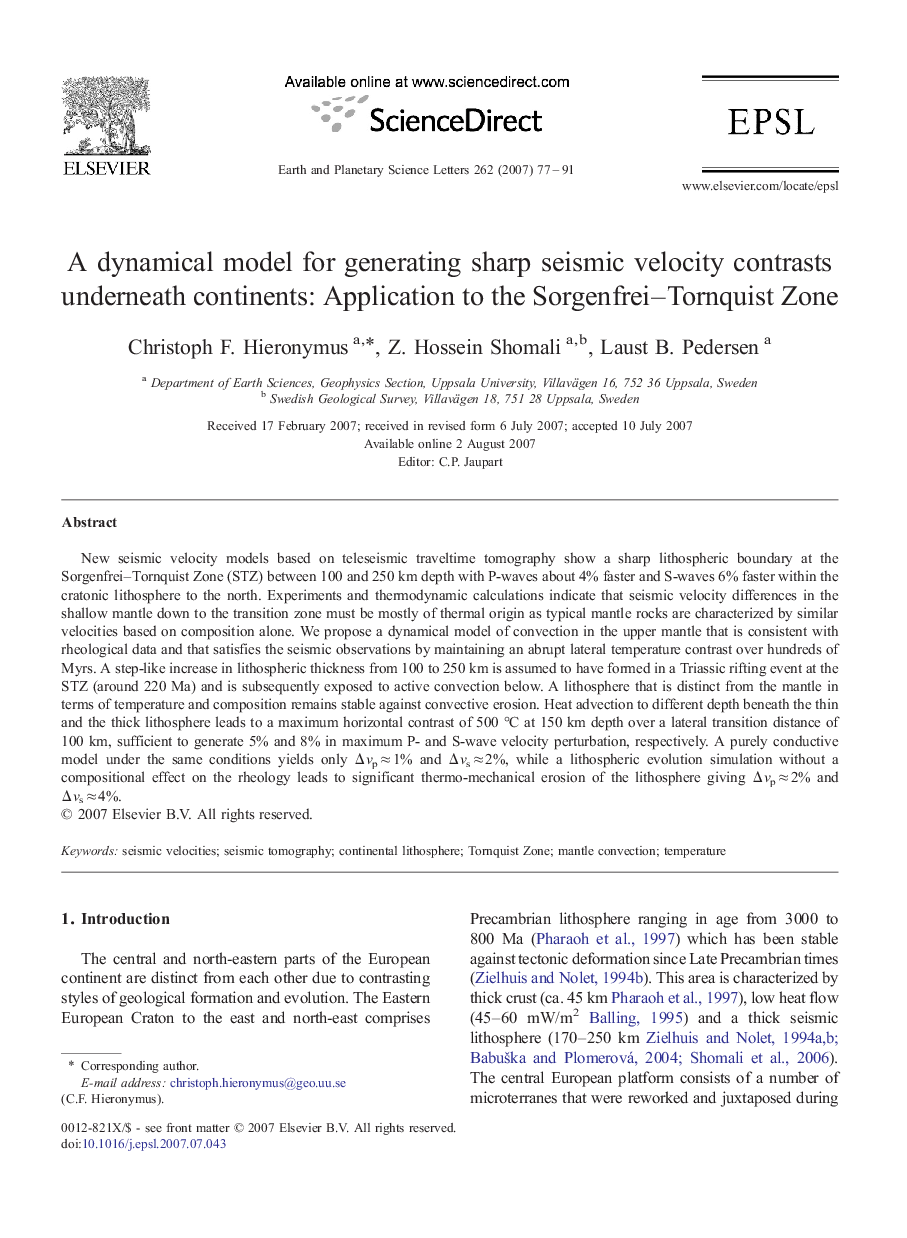| Article ID | Journal | Published Year | Pages | File Type |
|---|---|---|---|---|
| 4680140 | Earth and Planetary Science Letters | 2007 | 15 Pages |
New seismic velocity models based on teleseismic traveltime tomography show a sharp lithospheric boundary at the Sorgenfrei–Tornquist Zone (STZ) between 100 and 250 km depth with P-waves about 4% faster and S-waves 6% faster within the cratonic lithosphere to the north. Experiments and thermodynamic calculations indicate that seismic velocity differences in the shallow mantle down to the transition zone must be mostly of thermal origin as typical mantle rocks are characterized by similar velocities based on composition alone. We propose a dynamical model of convection in the upper mantle that is consistent with rheological data and that satisfies the seismic observations by maintaining an abrupt lateral temperature contrast over hundreds of Myrs. A step-like increase in lithospheric thickness from 100 to 250 km is assumed to have formed in a Triassic rifting event at the STZ (around 220 Ma) and is subsequently exposed to active convection below. A lithosphere that is distinct from the mantle in terms of temperature and composition remains stable against convective erosion. Heat advection to different depth beneath the thin and the thick lithosphere leads to a maximum horizontal contrast of 500 °C at 150 km depth over a lateral transition distance of 100 km, sufficient to generate 5% and 8% in maximum P- and S-wave velocity perturbation, respectively. A purely conductive model under the same conditions yields only Δvp ≈ 1% and Δvs ≈ 2%, while a lithospheric evolution simulation without a compositional effect on the rheology leads to significant thermo-mechanical erosion of the lithosphere giving Δvp ≈ 2% and Δvs ≈ 4%.
